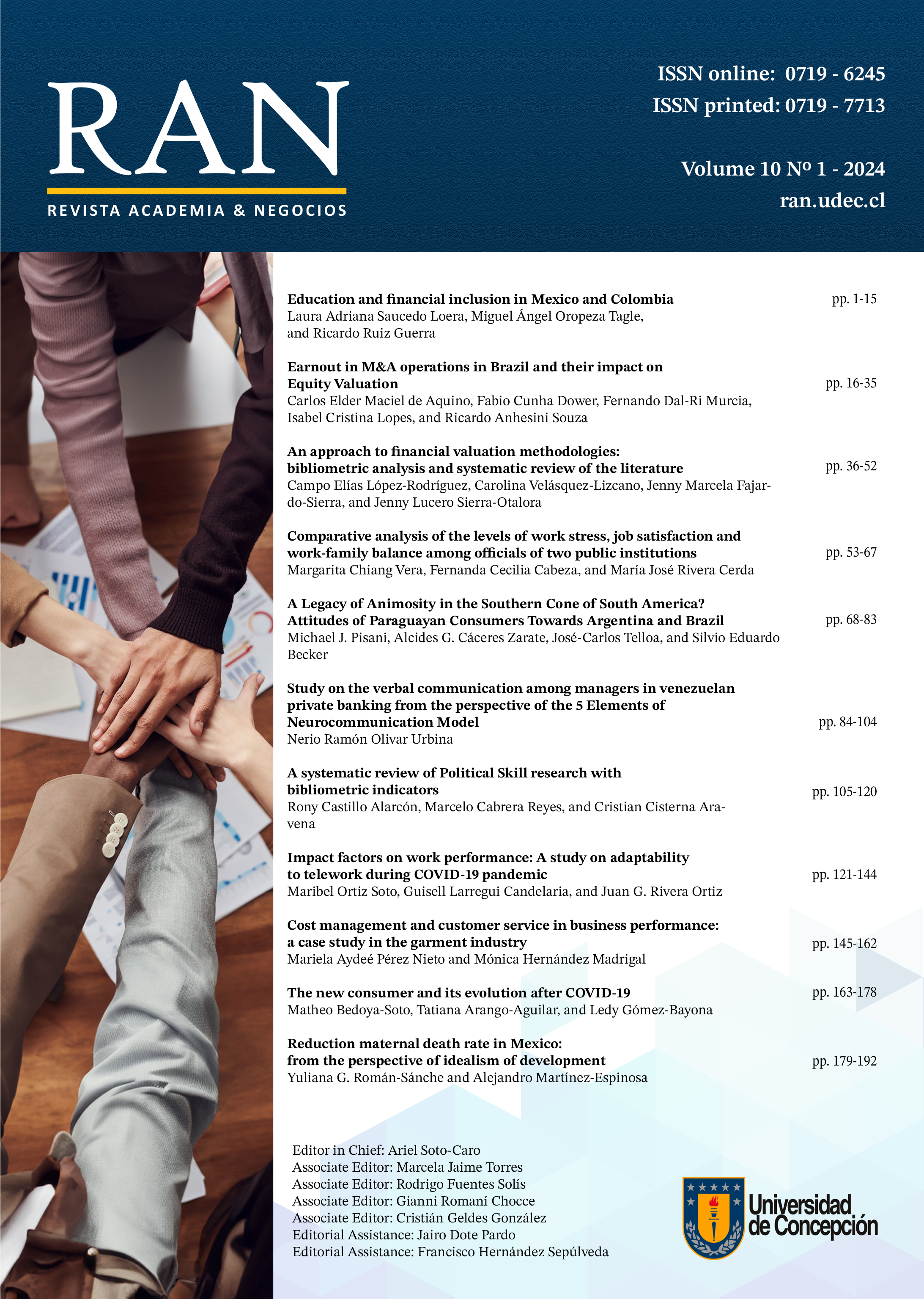Study on the verbal communication among managers in venezuelan private banking from the perspective of the 5 Elements of Neurocommunication Model
DOI:
https://doi.org/10.29393/RAN10-6DCNO10006Keywords:
communication, neurocommunication, verbal communication, model, bankingAbstract
Purpose: To diagnose the state of verbal communication among managers in Venezuelan private banking from the perspective of neurocommunication.
Methodology: This research was both exploratory and descriptive in nature, employing a qualitative approach with a non-experimental, field-based, cross-sectional design and a phenomenological orientation. The sample comprised nine managers from the top 10 banks in Venezuela. Data collection involved qualitative, non-standardized, and unstructured interviews.
Findings: Managers in Venezuelan private banking exhibit a fairly adequate understanding of concepts related to communication and recognize its significance in achieving organizational objectives. However, they reveal difficulties in effectively managing all the elements that constitute the applied neurocommunication model, influenced by personal, organizational, and cultural factors.
Implications: The study identified a set of dysfunctional elements in verbal communication among managers in Venezuelan private banks, which hinder the achievement of their objectives. These elements should be taken into account in development of their corporate communication plans.
Value: The practical application of the 5 Elements of Neurocommunication Model within a specific organizational context facilitated a novel approach to verbal communication in a key sector of Venezuelan economy.
Downloads
Published
How to Cite
Issue
Section
Copyright (c) 2024 Nerio Ramón Olivar Urbina

This work is licensed under a Creative Commons Attribution 4.0 International License.























